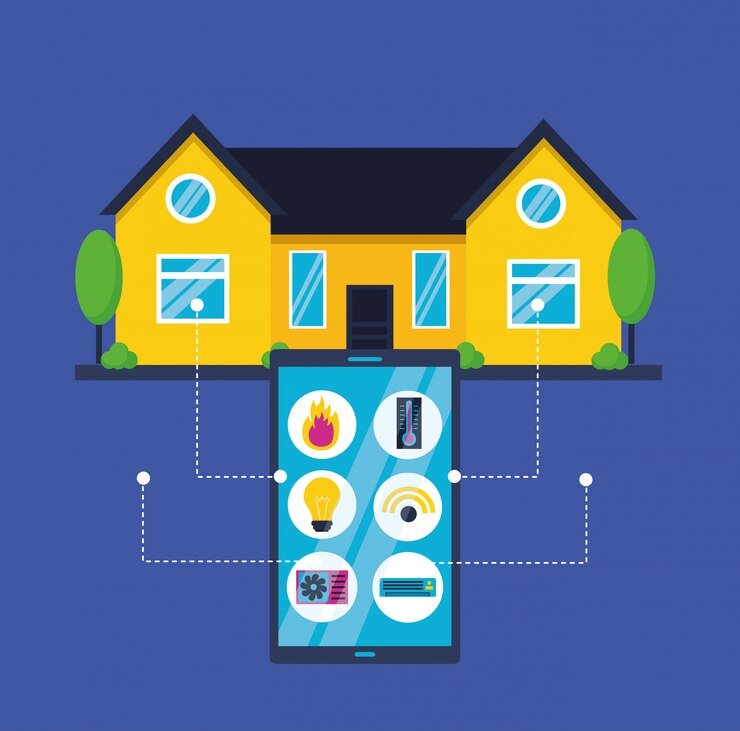How to Develop an On-Demand Home Services App?
Smartphones have changed how people access daily services. From booking taxis to ordering food, users want quick access to everything—including home services. Whether it’s plumbing, cleaning, or appliance repair, a well-designed on-demand home services app can connect users to professionals with just a few taps.
This blog walks you through the key steps to build an app that meets user needs and performs well in a competitive market.
Why Build an On-Demand Home Services App?
People value convenience. When something breaks down or needs attention at home, they prefer to get help without making multiple calls or browsing endless service listings. A home services app solves this by offering a fast way to schedule tasks and pay for them.
For service providers, the app opens a direct line to customers. This means more job opportunities, fewer missed calls, and quicker payments.
Key Features Your App Must Have
Before you start development, make sure your on demand home services app includes the right set of features for both users and service providers.
1. User Registration and Login
Let users register with their phone number, email, or social login. Keep the sign-up process short and simple.
2. Service Categories
Display clear service categories like cleaning, pest control, electricians, plumbers, etc. Use icons and short titles for quick navigation.
3. Booking System
Allow users to book a service by selecting the type, preferred date and time, and location. Keep the process smooth and quick.
4. Real-Time Tracking
Once a service provider accepts the job, let users track their arrival. This builds trust and adds transparency.
5. Payment Gateway
Add secure options such as credit/debit cards, digital wallets, and net banking. Offer receipts within the app.
6. Ratings and Reviews
After the job is complete, prompt users to rate the service and leave feedback. This builds trust for future customers.
7. Notifications
Send timely alerts for booking confirmations, arrival updates, offers, and reminders.
8. Admin Panel
Create a dashboard where you can manage users, providers, payments, and service categories. This helps you run the platform smoothly.
Step-by-Step Process to Build the App
Building an on-demand home services app involves more than just writing code. You need a clear plan that covers market needs, technical decisions, user experience, and business goals. Follow these steps to move from idea to a working app that delivers real value.
Step 1: Research the Market
Look at what existing home services apps offer. Check reviews to see what users like and dislike. Identify the gaps so you can address them in your app.
Step 2: Define the Features and Workflow
List all the features your app needs. Sketch user flows for different types of users: customer, service provider, and admin. Decide how they will interact with each other.
Step 3: Choose the Right Tech Stack
Pick technologies that match your goals:
- Frontend: React Native or Flutter for cross-platform support
- Backend: Node.js or Laravel for server-side logic
- Database: MongoDB or PostgreSQL for storing data
- Cloud Services: AWS or Google Cloud for hosting
- Payment Gateway: Stripe, Razorpay, or PayPal
Your tech choices impact the speed, scalability, and security of the app.
Step 4: Design the UI/UX
Hire a designer or use tools like Figma or Adobe XD to create wireframes. Keep the interface clean, with minimal steps to complete tasks. Users should always know what to do next.
Step 5: Develop the App
Split the development process into small parts—login, service browsing, booking, payments, etc. Use agile methods so you can test and improve each feature before moving to the next.
Work on both the customer and service provider sides of the app. Make sure providers can:
- Create a profile
- Set availability
- Accept or reject jobs
- View job history and earnings
Step 6: Add Security Measures
Protect user data by adding two-factor authentication, data encryption, and secure APIs. Test the system for vulnerabilities before launch.
Step 7: Test Across Devices
Check how your app performs on different phones and screen sizes. Look for bugs, speed issues, or crashes. Fix these before release.
Use both manual and automated testing to cover as many scenarios as possible.
Step 8: Launch the App
Publish your app on the App Store and Google Play. Prepare marketing campaigns to spread the word. Offer launch discounts or referral codes to attract users.
How to Get Service Providers on Board
Without quality service providers, the app won’t succeed. Here’s how to bring them in:
- Partner with small businesses and independent contractors
- Offer clear payment terms and fair commissions
- Make registration easy and quick
- Provide training on how to use the app
A solid network of skilled providers builds a strong base for customer satisfaction.
Promote the App Effectively
Marketing makes the difference between a hidden gem and a top-rated app. Use these strategies:
- Run social media ads targeting local users
- Work with influencers or bloggers in the home improvement space
- Set up a referral system that rewards both customers and providers
- List your app in local business directories
Track which campaigns bring the most users and adjust your strategy accordingly.
Keep Improving After Launch
Once your app goes live, collect feedback from users and service providers. Watch user behavior through analytics tools. Improve the app based on real usage instead of assumptions.
Add new features based on user demand. For example, add subscription plans, emergency services, or recurring bookings.
Also, stay updated with tech changes. Update the app regularly for bug fixes, security patches, and performance boosts.
Final Thoughts
Building an on-demand home services app takes planning, the right tools, and ongoing support. By focusing on what users really need, you can create a reliable platform that people trust for their daily service needs.
With the right balance of features, speed, and support, your app can stand out and grow over time.


